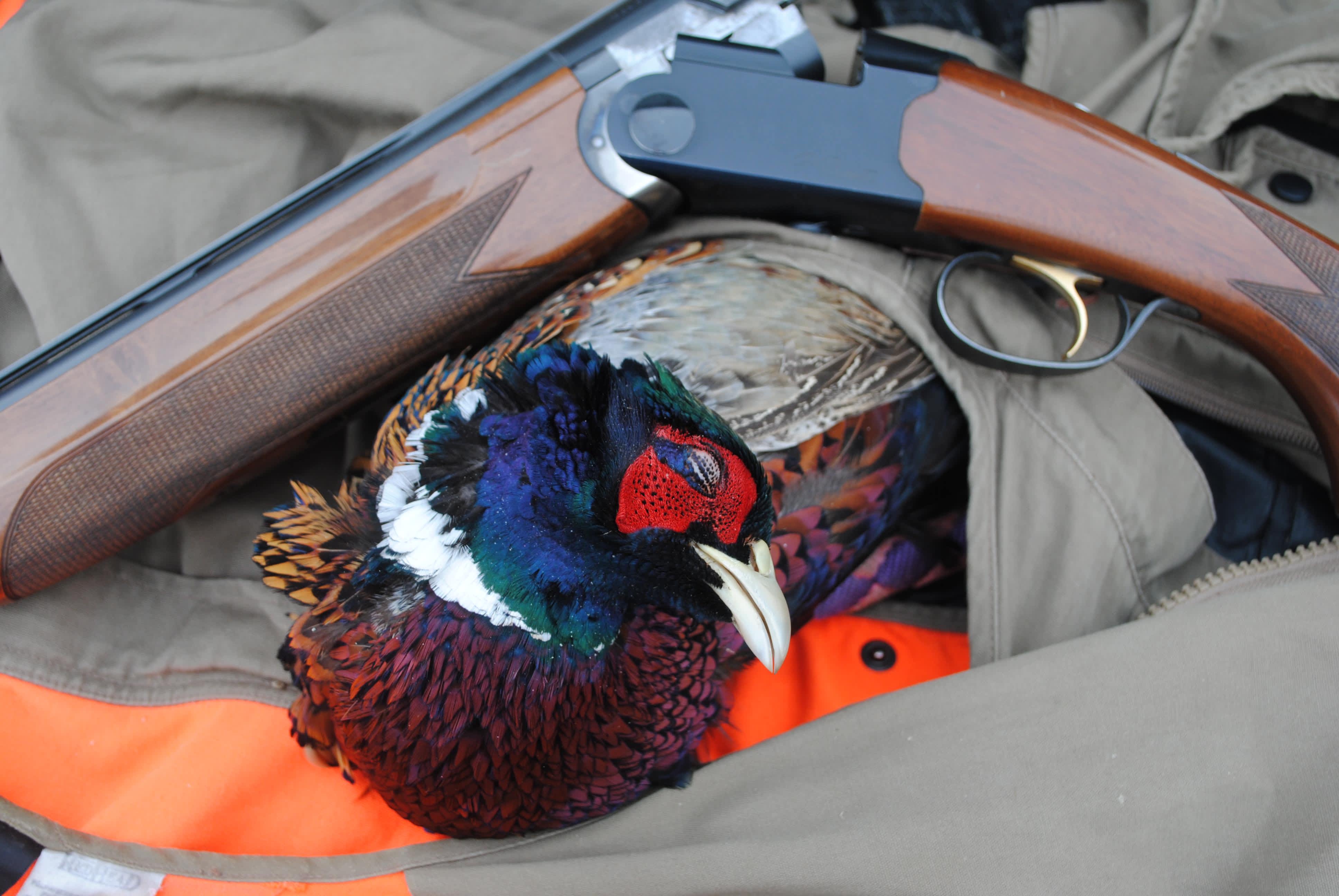Roughing it for a Rooster in Michigan’s Late Pheasant Season
Bob Gwizdz 12.14.12

Over the last several years I have developed an appreciation for the late pheasant season that surpasses my love for the traditional Oct. 20 opener (which, for a long, long time, had been my favorite day of the year). Usually by December, the lion’s share of the corn has been harvested and there’s been a winter storm or two to knock back the grass. The birds are generally right where you’d expect them to be: in the thick stuff.
So it was with some expectation that I took to the field for the late season opener with my buddy Paul Zeman. I had a cattail slough in mind, one I’d found last year and where I’d put up four roosters despite hunting under adverse conditions at the tail end of the season. This year, which has been as dry as the Mojave around here, I didn’t think I’d even need the hip boots I wore in there last year.
Turned out I didn’t–there was virtually no water in that slough this year and a guy might have hunted in tennis shoes and come out with reasonably dry feet. But it also turned out that my optimism had been misplaced.
We put up a rooster–at a distance–when we first stepped into the fog-enshrouded wetland and, by the time we’d covered half the area, our flush count had remained the same. Both our dogs–my setter, Rub, and Zeman’s Lab, Zoey–had gotten terribly birdy on a handful of occasions, but neither managed to put up a pheasant.
It was obvious that a lot of game used this slough; the runways were well defined. I suppose the birds just took off running and, through the maze of game trails in the thick cattails, managed to elude the hounds. Things improved slightly as we got to the second of half of the field. Zoe put up a couple of birds right off of her nose, Rub gave me a picture-perfect point, and then Zoe trailed a bird a long way–tail going 100 miles an hour the whole time–before flushing it. All four were hens.
As the fog lifted, I found that there was still standing corn on two sides of the slough. Probably where the birds were, eh?
Undaunted, we went to another place, a farm I never got to last year. The landowner, who is mostly a deer hunter, but has an appreciation for pheasants, had done a remarkable job with the land. The grass was thick and heavy–the kind that pheasants would probably be as likely to tunnel under as take to the air if threatened–and he’d planted some food plots (sorghum, sunflowers, corn) so that the place resembled a high-dollar shooting preserve.
Ninety minutes of trudging through the shin-tangling kind of stuff that threatened to take you to your knees every other step resulted in…nada. The dogs had gotten interested on several occasions, but never found a bird.

As we swung through the last bit of grass we hadn’t covered, a rooster got up maybe 50 yards in front of me and flew directly away. And while I marked it down, another jumped into the sky but flew across in front of me.
I dumped him into the tall grass across the creek from me (in retrospect, we must have pushed those birds to the edge of the creek where they got nervous). By the time I got a running start to clear the creek, Zoe was hard at work in the grass.
“I hate to say it, but that bird didn’t look like it was hit that hard,” Zeman said.
“It was hit hard enough,” I said, with more hope than certitude.
Zoe got right on the pheasant’s butt, but was unable to corral it; the bird would jump up, get a few feet away, then disappear in grass.
She lost the trail. Zeman and I went to where we’d last seen the bird, called in the dogs, and moved the grass around to no avail. Just about the time we were ready to give up, I saw Rub, head buried in a clump of grass, frozen solid on point. I took a step toward him; he lunged and came out with a mouthful of tail feathers. That put Zoe back in the game and over the course of the next few minutes and 25 or 30 yards–and I’m certain it would have been a rather Keystone-Cops-ish affair had we captured it on video–she ran it down and fetched it.
Just that little bit of success gave us a second wind. We went back into the shin-tangle with relish. Zoe put up a couple of birds (both hens). But we never found that first rooster again.
When we looped back to the truck and did the math, well, is it any wonder why so few folks hunt pheasants these days? We had about five hours (each) on the ground, with one rooster to show for it, in some of the prettiest habitat I’ve ever been in anywhere.
And that’s the problem; there’s so little habitat now that even the best of it is merely islands in a sea; there’s not even enough marginal habitat around it to produce birds to wind up in the good stuff.
The state’s Pheasant Restoration Initiative hopes to address this problem by spreading habitat across the landscape–instead of in just small, intense locations, which is how things have always been done in the past. And though state wildlife officials remain optimistic, the fruit of that effort is still years from ripening.
So what does that mean for guys my age?
Well, we’d better be thankful for the opportunities we do get in the meantime. And hope we live long enough to see a return to glory.
For more information on Michigan hunting go to michigan.org.

